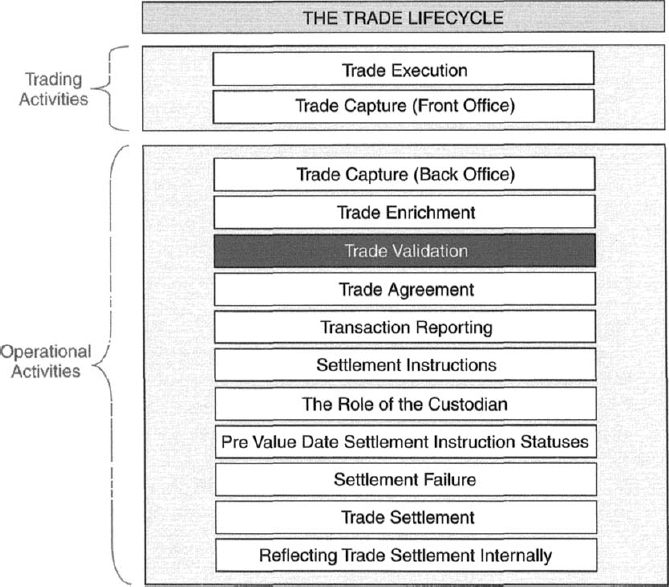13
Trade Validation

13.1 INTRODUCTION
Having executed, captured and enriched a trade, it is now complete and the various tasks, such as:
- issuing a trade confirmation
- reporting the trade to the regulatory authorities
- issuing settlement instructions
could now be actioned.
However, many STOs adopt a final check of the data contained within a fully enriched trade, in order to reduce the possibility of erroneous information being sent to the outside world. This activity is known as trade validation, a mechanism to reduce risk and remain in control. Unless an STO performs validation of trade information at this stage of the trade lifecycle, there is a risk that:
- timely and accurate servicing of clients
- avoidance of operational risk
- minimising of operational costs
will not be achieved successfully.
Conversely, the desire to also achieve STP requires that an STO must decide upon an acceptable balance between the need to validate trades and the temptation to allow all operational activities to commence as quickly as possible.
13.2 STRAIGHT THROUGH PROCESSING
As stated in Chapter 10, STP is an objective, which is to manage the trade throughout its entire lifecycle without human intervention.
During the 1990s, ‘STP’ became an internationally recognised term, with many of the world's organisations having a role to play in the automation of trade processing, including:
- institutional investors ...
Get Securities Operations: A Guide to Trade and Position Management now with the O’Reilly learning platform.
O’Reilly members experience books, live events, courses curated by job role, and more from O’Reilly and nearly 200 top publishers.

